 "ttyymmnn" (ttyymmnn)
"ttyymmnn" (ttyymmnn)
01/10/2020 at 12:35 • Filed to: wingspan, Planelopnik, TDIAH
 4
4
 7
7
 "ttyymmnn" (ttyymmnn)
"ttyymmnn" (ttyymmnn)
01/10/2020 at 12:35 • Filed to: wingspan, Planelopnik, TDIAH |  4 4
|  7 7 |
!!! UNKNOWN CONTENT TYPE !!!
Welcome to
This Date in Aviation History
, getting of you caught up on milestones, important historical events and people in aviation from January 8 through January 10.
!!! UNKNOWN CONTENT TYPE !!!
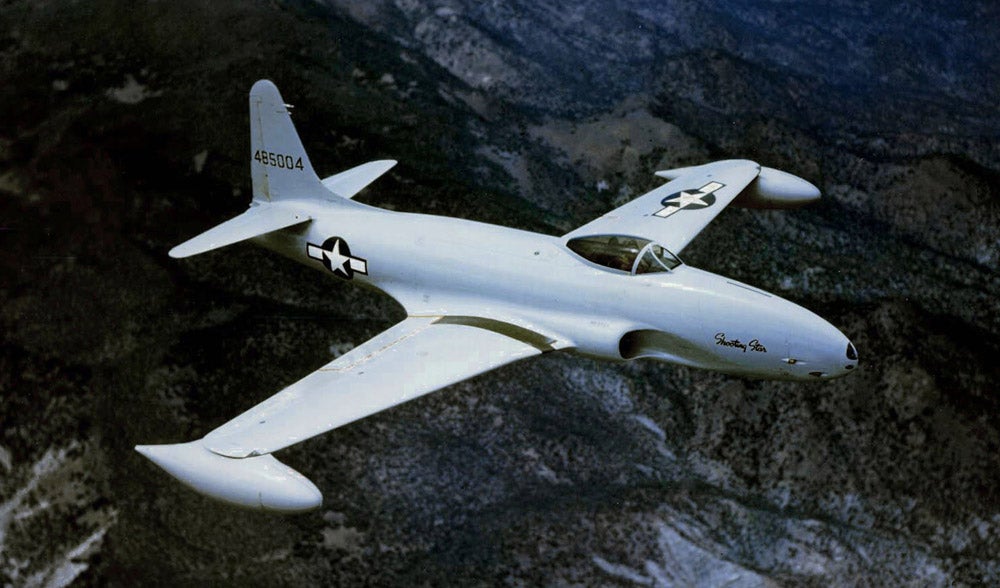
An early Lockheed P-80A in flight in 1946 or 1947 (US Air Force)
January 8, 1944 – The first flight of the Lockheed P-80 Shooting Star. Though the jet engine actually predates WWII, technological advances in engine and aircraft design saw the powerplant mature to the point that it could dependably power an aircraft. The Germans were the first to field a jet-powered fighter with the !!!error: Indecipherable SUB-paragraph formatting!!! , and the British were close on their heels with the !!!error: Indecipherable SUB-paragraph formatting!!! . The Americans, however, were much farther behind on jet engine development, so their first efforts in the jet fighter age would be powered by British engines. Nevertheless, the P-80 Shooting Star would emerge as perhaps the best jet fighter of the war period, though it came too late to see action in that conflict.
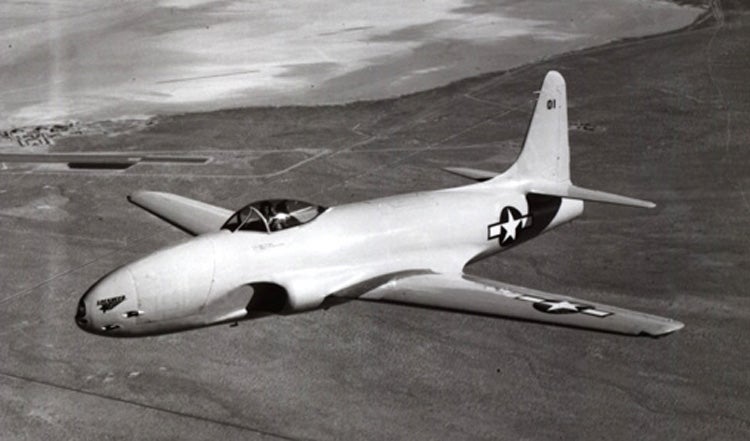
The second XP-80 prototype, nicknamed Gray Ghost, in flight. The wingtip fuel tanks were added on the P-80A production aircraft. This aircraft was lost to an engine failure in 1945, and the test pilot, Tony LeVier, broke his back while ejecting. (US Air Force)
The Shooting Star began as a development of the !!!error: Indecipherable SUB-paragraph formatting!!! , America’s first jet-powered fighter, when Bell was unable to continue its work on the fighter and the design passed to Lockheed. In just 143 days, Lockheed had redesigned the Airacomet around a !!!error: Indecipherable SUB-paragraph formatting!!! turbojet engine, and America’s first operational jet fighter was born. While that engine only provided 2,460 pounds of thrust, the Shooting Star still reached a top speed of 502 mph, the first American aircraft to exceed 500 mph in level flight. Later variants were powered by a General Electric I-40 engine, itself an improvement of another British design, and ultimately produced by the !!!error: Indecipherable SUB-paragraph formatting!!! . The Air Force was so impressed with the performance of the sleek new fighter that they immediately ordered 5,000 copies, but that number was reduced to 917 with the end of WWII.
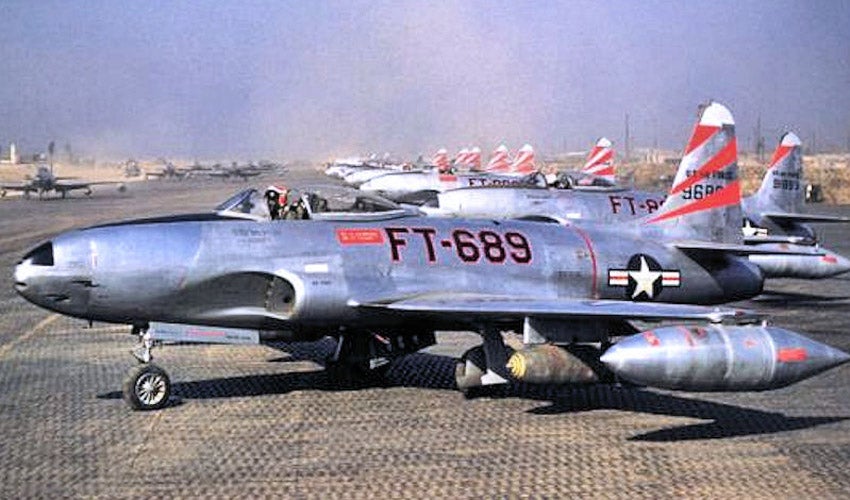
Shooting Stars of the 36th Fighter-Bomber Squadron in Korea (US Air Force)
The early Shooting Stars were not without teething troubles, and difficulties with fuel pumps led to a spate of crashes, one of which killed !!!error: Indecipherable SUB-paragraph formatting!!! , America’s top scoring WWII fighter ace. But once the fuel delivery issues were solved, the P-80, now called the F-80 in the revised Air Force designation system, went on to become an excellent fighter, and the Shooting Star laid claim to the world’s first jet-to-jet aerial victory when it downed a Russian-built !!!error: Indecipherable SUB-paragraph formatting!!! in the skies over Korea. Despite that victory, the Shooting Star was no match for the swept-wig MiG, so air superiority duties were turned over to the !!!error: Indecipherable SUB-paragraph formatting!!! , while the F-80 took on ground attack and reconnaissance missions. Though the F-80's days as a jet fighter ended with the Korean War, the two-seat trainer variant, known as the !!!error: Indecipherable SUB-paragraph formatting!!! , became America’s first jet-powered trainer and served into the 1980s. A total of 1,715 P/F-80 fighters were produced, but over 6,550 T-33s were built before production ended in 1959.
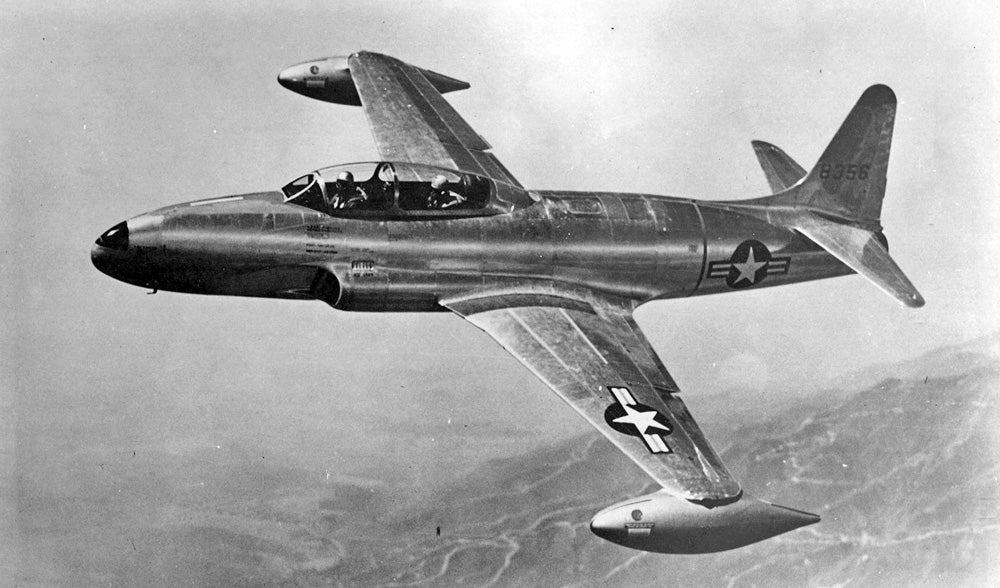
A two-seat T-33. More than 6,500 T-33 trainers were built, compared to 1,715 single-seat fighters. (US Air Force)
!!! UNKNOWN CONTENT TYPE !!!
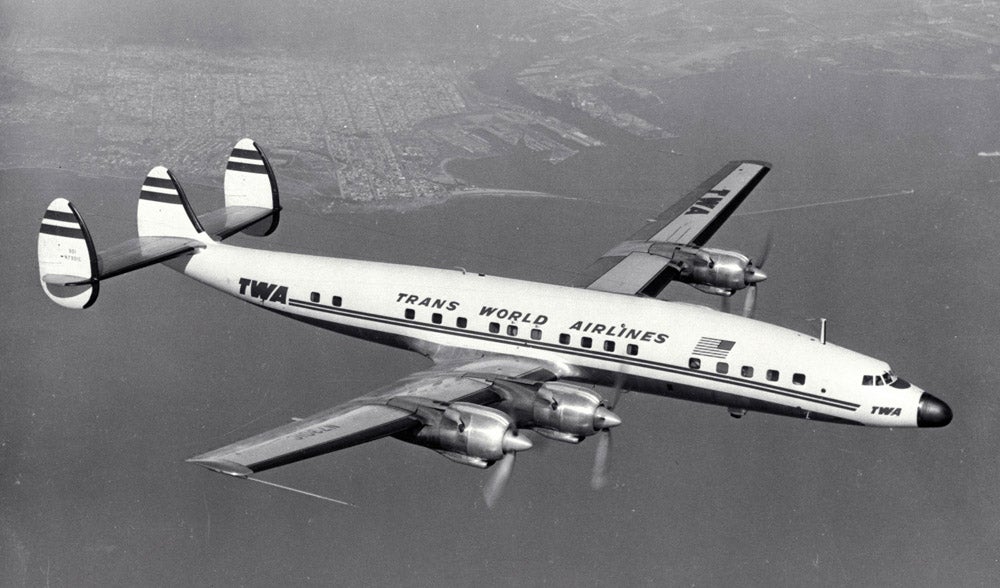
A Lockheed L-1649 Constellation of Trans World Airlines (NASA)
January 9, 1943 – The first flight of the Lockheed Constellation. With its graceful curves, the Lockheed Constellation, nicknamed “Connie,” is arguably one of the most beautiful aircraft ever designed. But the comely Connie started life as a much more plain Jane aircraft, the !!!error: Indecipherable SUB-paragraph formatting!!! , a run of the mill, four-engine transport that never entered production. In 1939, eccentric billionaire !!!error: Indecipherable SUB-paragraph formatting!!! , owner of Transcontinental & Western Airlines (which would later become TWA), held a meeting with !!!error: Indecipherable SUB-paragraph formatting!!! , the president of T&WA, along with other Lockheed executives. Hughes expressed his desire for a new large passenger airliner, and he felt that the Excalibur wouldn’t meet his needs. So the Lockheed engineers, including !!!error: Indecipherable SUB-paragraph formatting!!! , who was destined to become one of America’s greatest aviation engineers, went back to the drawing board. A mere three weeks later, they presented Hughes with the initial plans for the Connie, now designated L-049.
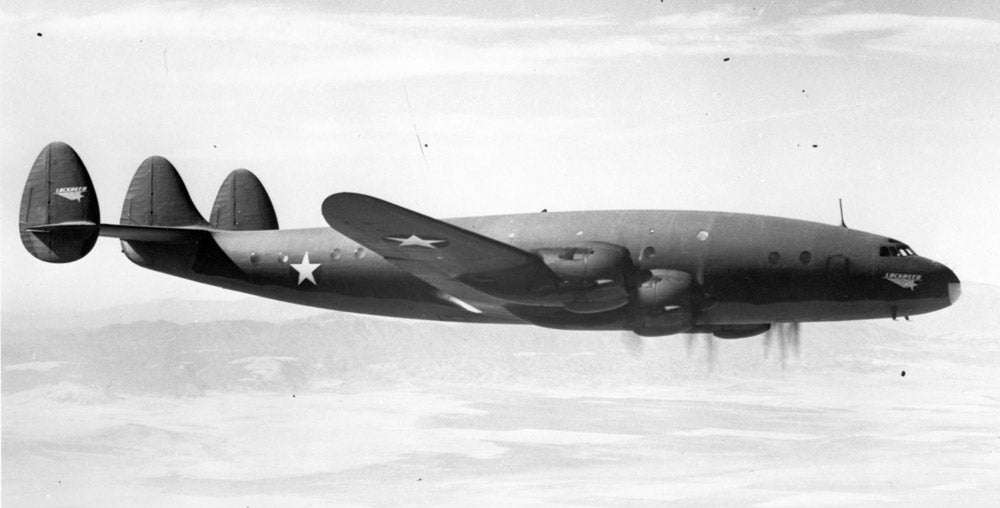
The first Constellation in US Army Air Forces livery, where it was known as the C-69 (San Diego Air and Space Museum)
The Constellation was a truly modern airliner, and featured electric de-icing, hydraulic assisted controls and variable pitch propellers. The wings were patterned after the !!!error: Indecipherable SUB-paragraph formatting!!! , which had been designed by Kelly Johnson. The Connie was powered by a quartet of !!!error: Indecipherable SUB-paragraph formatting!!! radial engines and was also pressurized to allow for high altitude flight. At the time, the Connie was the most expensive airliner ever produced, and Hughes himself funded the purchase of 40 aircraft since T&WA didn’t have the funds to pay for them. By bankrolling the purchase, Hughes got to weigh in on the design, and he brought in famed designer !!!error: Indecipherable SUB-paragraph formatting!!! to redesign the cabin to his liking.
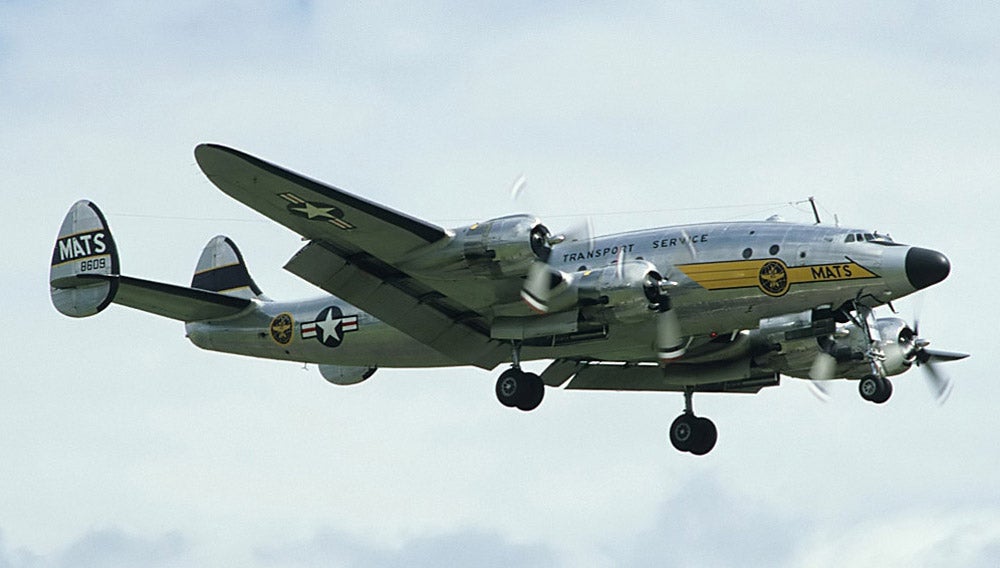 !!!CAPTION ERROR: MAY BE MULTI-LINE OR CONTAIN LINK!!!
!!!CAPTION ERROR: MAY BE MULTI-LINE OR CONTAIN LINK!!!
Production of the Constellation was a tightly held secret, since Hughes didn’t want Pan Am or any other rival air carriers to know about his new airliner. But the secret was revealed when the US Army came to inspect Lockheed’s production facility a few months before the war. Following the Japanese attack on Pearl Harbor, Lockheed’s production lines became the property of the US government, and production of the Constellation would have to wait until the Army got theirs first. Thus, the first flight of the L-049 Constellation was actually the first flight of the Lockheed C-69, its military designation. The Army ordered 260 C-69s for cargo and troop transport, and even considered converting it into a bomber. But problems with the engines led to delays that caused the Army to reduce its order to 73 aircraft. Eventually, only 22 C-69s were built, and just 15 were delivered.
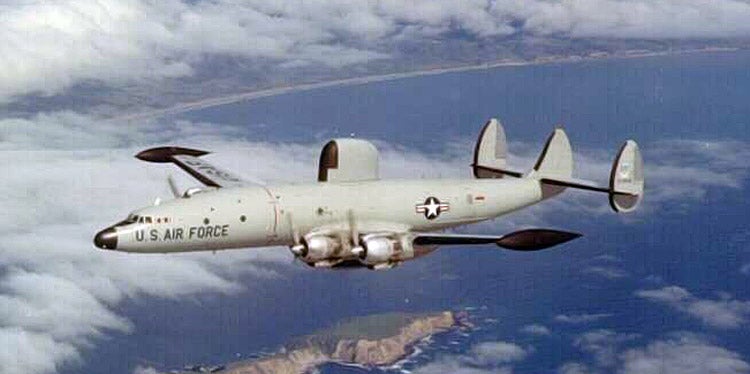
Lockheed EC-121D Warning Star over Thailand in 1972 (US Air Force)
Following the war, Lockheed production returned to the civilian market, with military Connies converted to civilian aircraft. Improvements were made to those already under construction, such as the addition of a luxury interior, more windows, a galley, and crew rest areas, along with better ventilation and heating. And, since the C-69 had already been tested and flown by the Army, Lockheed was far ahead of its competitors, who were still working on their own post-war designs. The first production L-049 flew on July 12, 1945 and was delivered to TWA four months later. The first commercial flight was from New York City to Paris, a trip that took nearly 17 hours with stops for fuel in Newfoundland and Ireland. The Connie proved to be a remarkably adaptable airplane. Future variants to its civilian version added increased speed, passenger space, and range. And the improved C-121 Constellation (L-749) joined the Air Force as a transport and cargo aircraft., while the
!!!error: Indecipherable SUB-paragraph formatting!!!
r electronic surveillance variant served the US Air Force into the 1980s. The military retired their Constellations in the 1970s, but some passenger Connies flew into the 1980s before being retired.
!!! UNKNOWN CONTENT TYPE !!!
!!! UNKNOWN CONTENT TYPE !!!
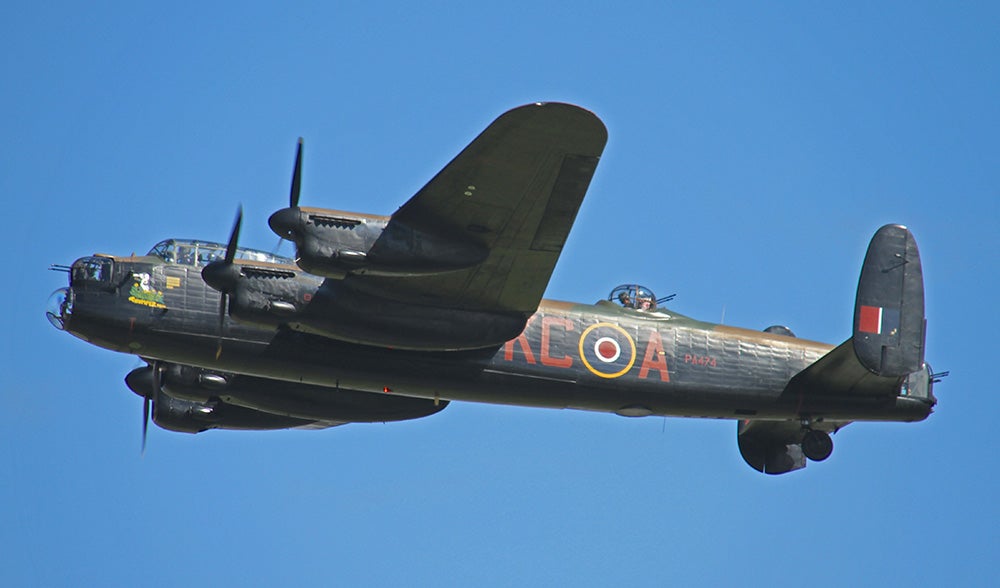 !!!CAPTION ERROR: MAY BE MULTI-LINE OR CONTAIN LINK!!!
!!!CAPTION ERROR: MAY BE MULTI-LINE OR CONTAIN LINK!!!
January 9, 1941 – The first flight of the Avro Lancaster. In the 1930s, the US and Britain were following different tacks in the development of strategic bombers. The Americans were tending towards four-engine aircraft, while the British, who were concerned with the ability to produce enough engines, put their efforts into twin-engine bombers in the belief that having two very powerful engines was a better arrangement than four smaller ones. In 1936, A.V. Roe, better known as Avro, produced the !!!error: Indecipherable SUB-paragraph formatting!!! , a twin-engine bomber that was powered by two 24-cylinder !!!error: Indecipherable SUB-paragraph formatting!!! engines. Despite the promise of these large !!!error: Indecipherable SUB-paragraph formatting!!! engines, the Manchester was underpowered and only built in small numbers. But it was the Manchester that provided the basis for the mighty Lancaster that followed.
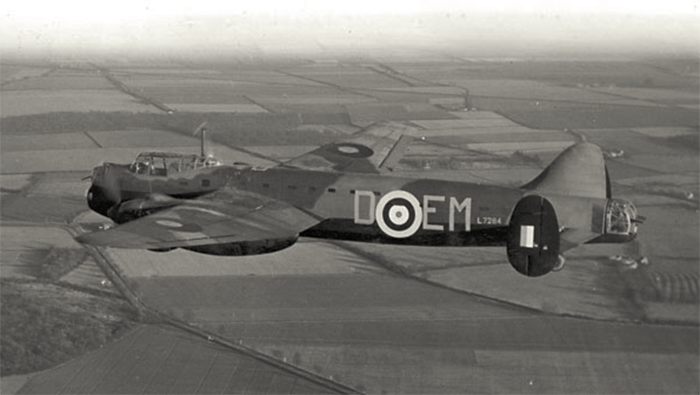
The twin-engine Avro Manchester served as the basis for the four-engine Lancaster. Note the center vertical stabilizer of the Manchester Mk 1 which was removed in the Mk 2 and Lancaster variants. (UK Government)
By 1936, the RAF came to the conclusion that four engines were indeed better than two. Seeing the results of efforts in the US and Russia, which demonstrated that four smaller engines provided good lifting power as well as better range, the British began work to develop their own four-engine bomber. Three new heavy bombers came out of this effort: the !!!error: Indecipherable SUB-paragraph formatting!!! , the !!!error: Indecipherable SUB-paragraph formatting!!! , and the Avro Lancaster. For the Lancaster, Avro chief design engineer !!!error: Indecipherable SUB-paragraph formatting!!! began with the Manchester and enlarged it to carry more payload and fitted it with four !!!error: Indecipherable SUB-paragraph formatting!!! engines. While not as powerful as the Vulture, the Merlins were more reliable, and would become perhaps the greatest inline engine of the war. With its Merlins, the Lancaster made use of the podded “ !!!error: Indecipherable SUB-paragraph formatting!!! ” concept developed by the Germans, where entire engines and ancillary equipment could be changed out as a single unit or swapped between comparable aircraft. The first Lancaster prototype featured the twin-lobed tail and stubby vertical stabilizer from the first Manchesters, but that arrangement was abandoned in favor of removing the central fin and enlarging the lobes. Not only did this improve stability, it also provided a clearer field of fire for the dorsal gunner. Of particular importance to the design of the Lancaster was its enormous bomb bay. With an unobstructed length of 33 feet, the Lancaster was able to carry a wide variety of payloads, including the 12,000-pound Tall Boy and 22,000-pound Grand Slam strategic !!!error: Indecipherable SUB-paragraph formatting!!! developed by British engineer !!!error: Indecipherable SUB-paragraph formatting!!! .
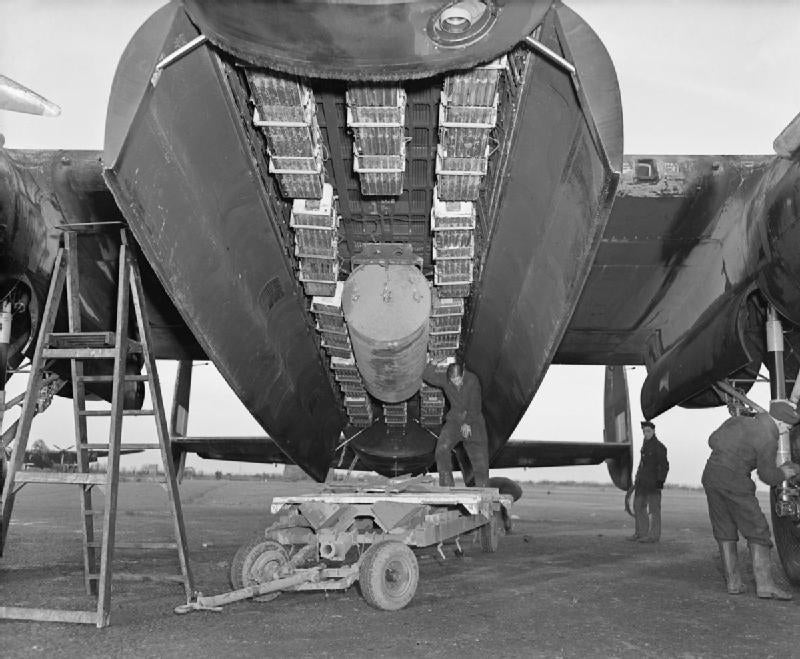
A view of the Lancaster’s long bomb bay showing a typical bomb load for a nighttime area bombing raid: one 4,000 impact-fused high-capacity bomb, called a “cookie,” and 12 Small Bomb Containers (SBCs) each loaded with incendiaries. (RAF)
The Lancaster entered service with RAF Bomber Command in March 1942 with a mine-laying mission near the !!!error: Indecipherable SUB-paragraph formatting!!! , and a bombing mission over the German city of Essen. It soon became the principal nighttime bomber in use by the RAF and the RCAF, and by 1945 Lancasters had dropped 618,378 US tons of bombs over the course of 156,000 sorties. Though the Lancaster was a rugged aircraft, only 35 managed to complete more than 100 missions, and the longest surviving Lancaster, which completed 139 missions, was retired and scrapped in 1947. In addition to its role as a nighttime !!!error: Indecipherable SUB-paragraph formatting!!! , the Lancaster also took part in precision daylight raids, including dropping the Tall Boy and Grand Slam bombs, the largest non-nuclear bombs deployed until 2017, against German U-boat pens. Lancasters were also modified to carry Barnes Wallis’ bouncing dam buster bombs during !!!error: Indecipherable SUB-paragraph formatting!!! , which attacked dams in the Ruhr Valley in an attempt to destroy German power generation, industrial water use and farm production.
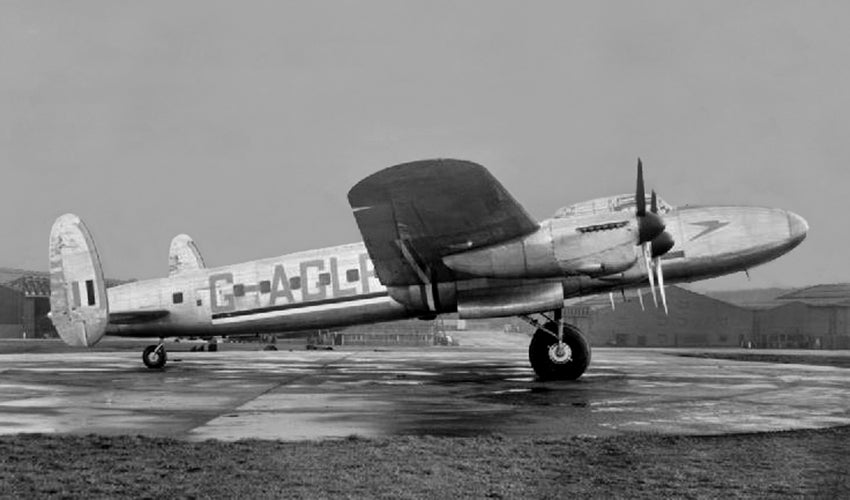
But the “Lanc” proved to be a versatile aircraft that performed beyond dropping bombs. Lancasters served as a test bed for nascent turbojet engines and early turboprop engines, and the former bomber was used to ferry prisoners of war back to the British Isles and continued in Canadian service until 1963. It was also developed into a transatlantic passenger and mail plane known as the !!!error: Indecipherable SUB-paragraph formatting!!! . Lancastrians played a vital role in the Berlin Airlift, and one took part in a 1945 mission to locate the !!!error: Indecipherable SUB-paragraph formatting!!! . The Lancaster was further developed into the larger !!!error: Indecipherable SUB-paragraph formatting!!! , which replaced the Lancaster and was the last piston-powered bomber flown by the RAF. A total of 7,377 Lancasters were built in England and Canada, the most of any British heavy bomber.
!!! UNKNOWN CONTENT TYPE !!!
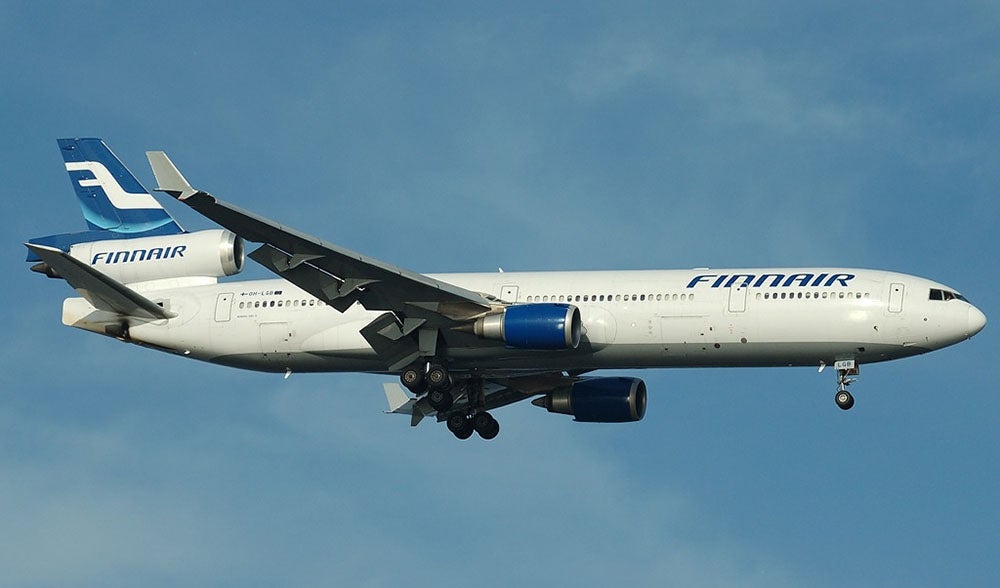 !!!CAPTION ERROR: MAY BE MULTI-LINE OR CONTAIN LINK!!!
!!!CAPTION ERROR: MAY BE MULTI-LINE OR CONTAIN LINK!!!
January 10, 1990 – The first flight of the McDonnell Douglas MD-11. Passenger aviation entered the jet age with the de Havilland Comet, and aircraft that followed, such as the four-engine !!!error: Indecipherable SUB-paragraph formatting!!! and the !!!error: Indecipherable SUB-paragraph formatting!!! , helped usher in global air travel. But ad the commercial aviation industry grew, the development of the jet airliner became a race for bigger and bigger aircraft that could carry more passengers to farther destinations. In the early era of the jet airliner, those range and capacity goals could only be met by stretching the length of current, single-aisle airliners to their limit. Thoughts turned to a double-decker airliner, something that had been done with modest success in the piston era, but the ultimate solution lay not in lengthening the airliner but in widening it to allow for a second aisle. The first of what came to be known as the wide-body class of airliners arrived in 1969 with the !!!error: Indecipherable SUB-paragraph formatting!!! , an aircraft that was also a partial double-decker.
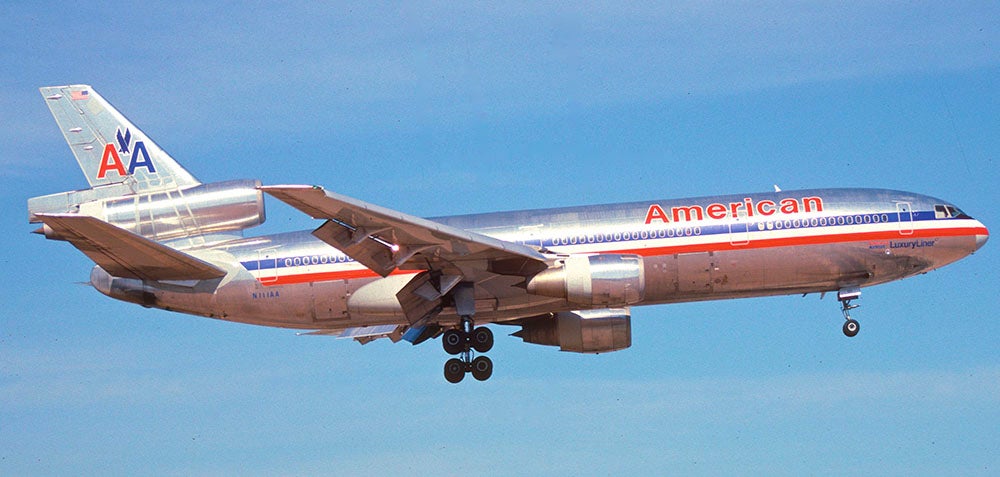 !!!CAPTION ERROR: MAY BE MULTI-LINE OR CONTAIN LINK!!!
!!!CAPTION ERROR: MAY BE MULTI-LINE OR CONTAIN LINK!!!
While the majority of airliners of the early jet era featured either two or four engines slung under the wings, the idea of using three engines was first put to use commercially in the !!!error: Indecipherable SUB-paragraph formatting!!! and the !!!error: Indecipherable SUB-paragraph formatting!!! , which took their maiden flights in 1962 and 1963. The !!!error: Indecipherable SUB-paragraph formatting!!! combined the trijet concept with the wide body airliner, an arrangement that had certain benefits. With one engine on each wing and a third centered on the tail, the airliner’s wing could be moved farther aft, along with its center of gravity (COG). Having more room in the center of the airliner allowed for quicker loading and unloading of passengers, and the rearward COG improved efficiency, though it did introduce some handling difficulties. Though it suffered some early difficulties in its development, including some high profile crashes, the DC-10 eventually became a reliable people hauler and cargo aircraft.
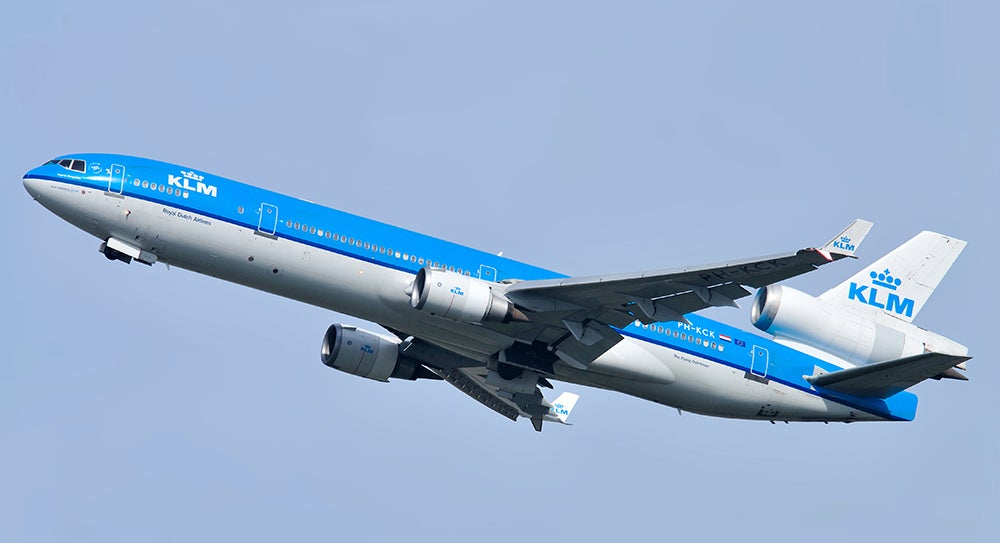 !!!CAPTION ERROR: MAY BE MULTI-LINE OR CONTAIN LINK!!!
!!!CAPTION ERROR: MAY BE MULTI-LINE OR CONTAIN LINK!!!
By 1976, McDonnell Douglas began work on developing a more advanced version of their wide-body tri-jet. They considered stretched versions of the existing DC-10, but customers showed no interest. By 1984, they had settled on two versions of what would be called the MD-11. The first was called the MD-11X-10 and was based on a DC-10-30 with a range of 6,500 miles. The second was the MD-11X-20, which would have a longer fuselage to accommodate up to 331 passengers with a range of 6,000 miles. By the end of 1986, McDonnell Douglas had 52 firm orders from 10 airlines in three different versions: passenger, combined passenger and freight (combi), and freighter. While based on the DC-10 and bearing a strong resemblance to its predecessor, the MD-11 has a stretched fuselage and increased wingspan with winglets that improve fuel efficiency. A combination of newer, more efficient high-bypass turbofan engines and an increased use of composites help to reduce weight and extend range. The advanced cockpit has a crew of two, removing the need for a flight engineer. It also employs what McDonnell Douglas called the Advanced Common Flightdeck (ACF) that it shares with the !!!error: Indecipherable SUB-paragraph formatting!!! (the final variant of the DC-9 series following the merger of McDonnell Douglas and Boeing in 1997). Finnair received the first MD-11 into service in 1990, and the 200th and final MD-11 was delivered to Sabena in April 1998.
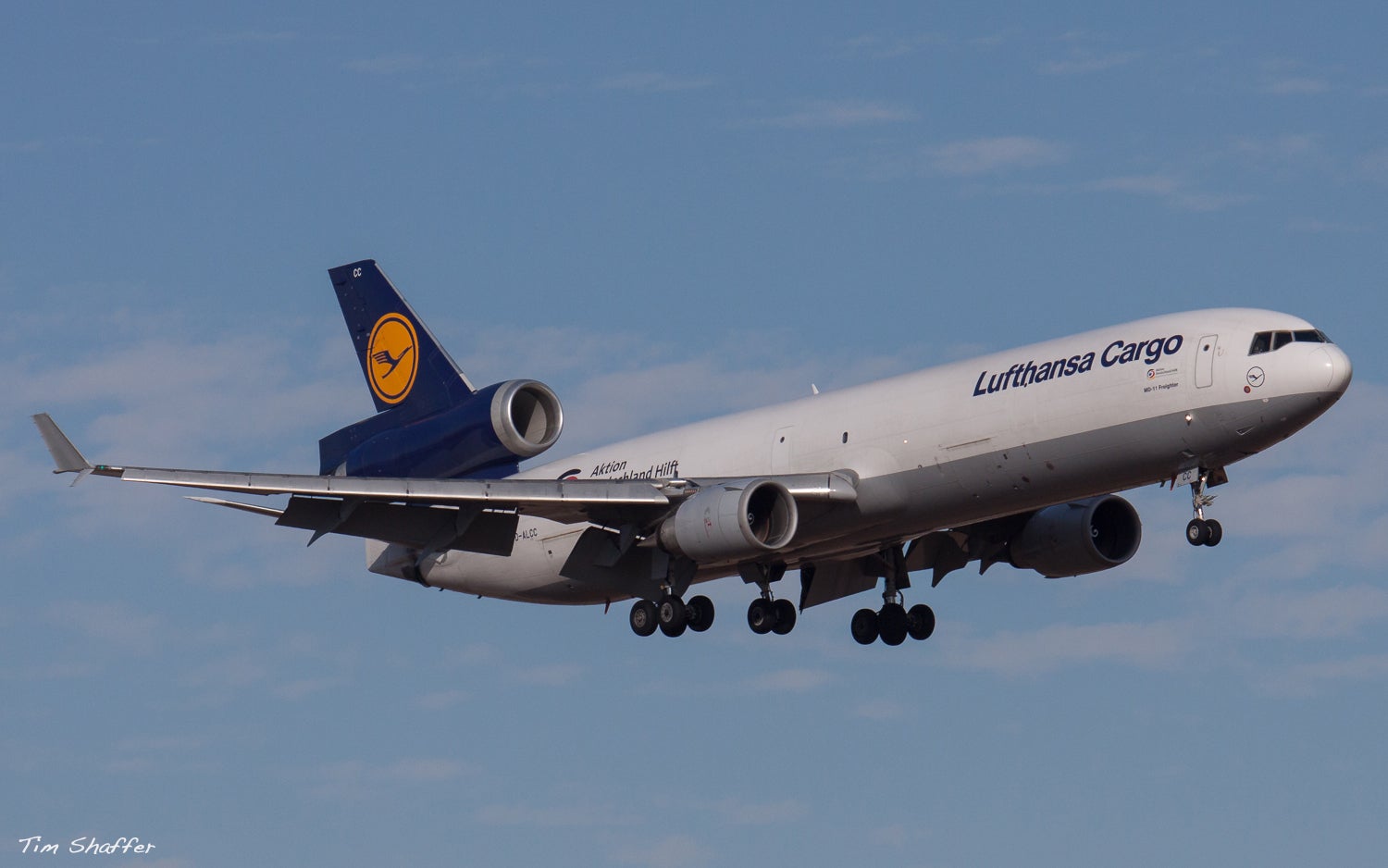
A Lufthansa Cargo MD-11F lands at Dallas-Fort Worth Airport (Tim Shaffer)
Though the trijet configuration had its benefits, advances in jet engine technology eventually outweighed the benefits of three engines, and airlines began to switch to more efficient twinjets. Ultimately, the MD-11 was a victim of a lack of sales caused by competition with other aircraft in the Boeing line, particularly the
!!!error: Indecipherable SUB-paragraph formatting!!!
and
!!!error: Indecipherable SUB-paragraph formatting!!!
, as well as competition from the
!!!error: Indecipherable SUB-paragraph formatting!!!
and
!!!error: Indecipherable SUB-paragraph formatting!!!
, and only 200 were built. KLM was the last airline to operate the MD-11 as a passenger carrier, and the company sold their last two airliners to a Russian cargo company in 2009. Though retired as a passenger airliner, the MD-11 remains in service today as a freighter.
!!! UNKNOWN CONTENT TYPE !!!
Short Takeoff
!!! UNKNOWN CONTENT TYPE !!!
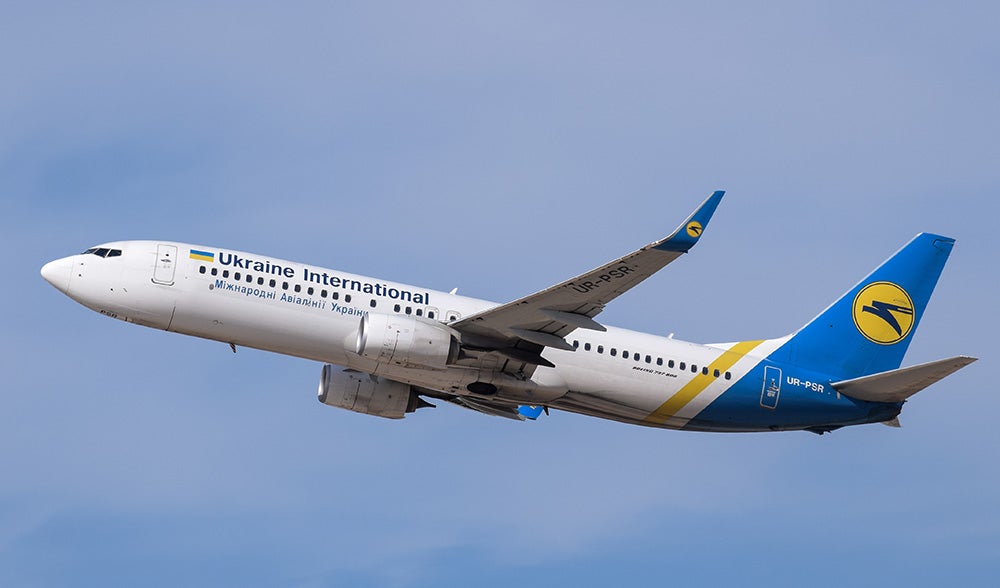 !!!CAPTION ERROR: MAY BE MULTI-LINE OR CONTAIN LINK!!!
!!!CAPTION ERROR: MAY BE MULTI-LINE OR CONTAIN LINK!!!
January 8, 2020 – Ukraine International Airlines Flight 752 crashes shortly after takeoff from Imam Khomeini International Airport in Tehran, Iran. Flight 752 was regularly scheduled Boeing 787-800 (UR-PSR) service from Tehran to the Ukranian capital Kyiv, and the flight departed just hours after Iran launched a barrage of ballistic missiles against American military bases in Iraq in retaliation for the US killing of high-ranking Iranian general Qasem Soleimani. As the airliner passed through 8,000 feet, it lost contact with ground stations and crashed in flames nine miles from the airport. All 176 passengers and crew were killed, including 130 Iranians and 63 Canadians. The Iranian government claimed that the plane came down due to an unspecified “technical fault,” while video and satellite evidence indicated that the plane had been shot down by Russian-made !!!error: Indecipherable SUB-paragraph formatting!!! surface-to-air missiles fired by Iranian forces. Iran initially denied the claim of the missile strike, but accepted responsibility two days later, calling it a case of human error after missile operators said the aircraft made an unexpected turn towards an Iranian military base.
!!! UNKNOWN CONTENT TYPE !!!
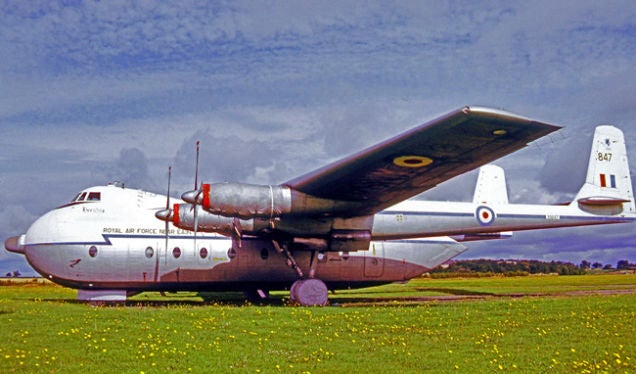 !!!CAPTION ERROR: MAY BE MULTI-LINE OR CONTAIN LINK!!!
!!!CAPTION ERROR: MAY BE MULTI-LINE OR CONTAIN LINK!!!
January 8, 1959 – The first flight of the Armstrong Whitworth AW.650/660 Argosy, a post-war, medium transport developed for the RAF and the final aircraft produced by !!!error: Indecipherable SUB-paragraph formatting!!! . Armstrong Whitworth was perhaps best known for the !!!error: Indecipherable SUB-paragraph formatting!!! bomber, which served as a large frontline bomber with the RAF throughout WWII. The Argosy arose from an RAF request for a freighter capable of carrying 25,000 pounds of cargo at a range of up to 2,000 miles. However, the RAF was initially uninterested in Armstrong Whitworth’s design, so the company forged ahead on their own with a civilian version, the AW.650, eventually developing the AW.660 militarized version when the RAF needed to replace their obsolete WWII-era freighters. A total of 74 Argosys were produced.
!!! UNKNOWN CONTENT TYPE !!!
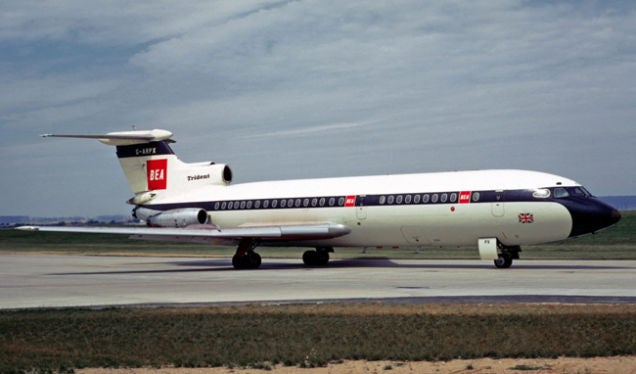 !!!CAPTION ERROR: MAY BE MULTI-LINE OR CONTAIN LINK!!!
!!!CAPTION ERROR: MAY BE MULTI-LINE OR CONTAIN LINK!!!
January 9, 1963 – The first flight of the Hawker Siddeley HS 121 Trident, a short- to medium-range airliner and the first to feature a third engine on the fuselage centerline. While the Trident’s design was unique for its era, political infighting in the British government over what form the new airliner would take delayed delivery until after the appearance of the !!!error: Indecipherable SUB-paragraph formatting!!! , a similar tri-jet configuration, and seriously hampered sales of the new airliner. Seating up to 140 passengers depending on variant, the Trident flew for the airlines of eight nations, as well as the militaries of China and Pakistan. By the time the Trident ceased production, only 117 had been built, while Boeing would eventually complete over 1,800 727s.
!!! UNKNOWN CONTENT TYPE !!!
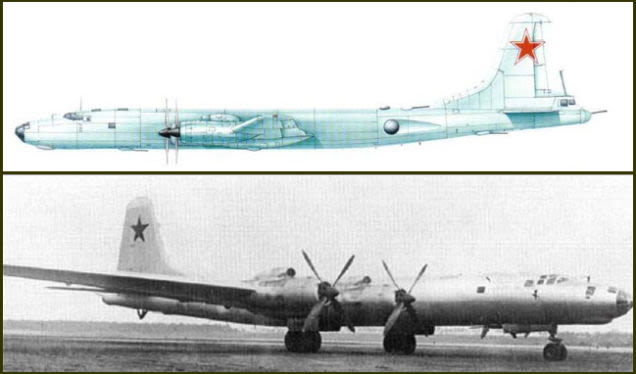
(Authors unknown)
January 9, 1951 – The first flight of the Tupolev Tu-85. On four different occasions in 1944, US !!!error: Indecipherable SUB-paragraph formatting!!! bombers attacking Japan were forced to make an emergency landing in Russia. Rather than return the bombers, the Soviets kept them and Tupolev made exact duplicates which were designated !!!error: Indecipherable SUB-paragraph formatting!!! . The Tu-85 (NATO reporting name “Barge”) was a greatly enlarged variant of the Tu-4, being nearly 50-percent heavier and having almost twice the range, though it still lacked the range to attack the US from Russia. After the B-29 proved susceptible to attack by more modern !!!error: Indecipherable SUB-paragraph formatting!!! fighters over Korea, the Russians halted development of the Tu-85 after two prototypes, choosing instead to develop the !!!error: Indecipherable SUB-paragraph formatting!!! which remains in service today.
!!! UNKNOWN CONTENT TYPE !!!
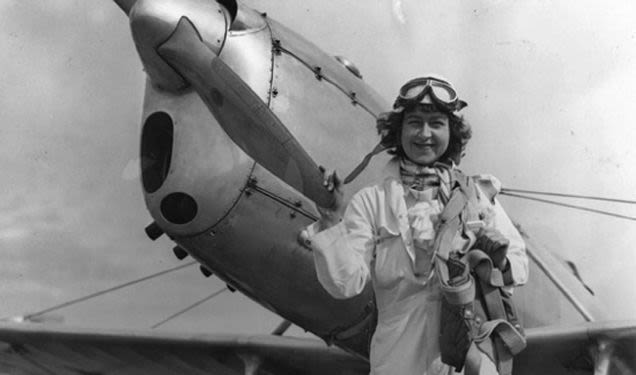
(Author unknown)
January 10, 1967 – The death of Laura Houghtaling Ingalls, a pioneering aviatrix and winner of the prestigious !!!error: Indecipherable SUB-paragraph formatting!!! for her 1934 flight in a !!!error: Indecipherable SUB-paragraph formatting!!! from Mexico to Chile, then across the Andes to Rio de Janeiro, then to Cuba and finally to Floyd Bennett Field in New York. The flight was the first over the Andes by a woman and the first flight by a woman from North America to South America. It also set a distance record for woman pilots of 17,000 miles. In 1942, Ingalls was convicted of serving as a publicity agent for the Nazis by accepting money from the German embassy while encouraging American non-intervention in WWII. Sentenced to up to eight years in prison, Ingalls was released in 1943 and applied for, but never received, a presidential pardon despite support from WWI fighter ace and Medal of Honor recipient !!!error: Indecipherable SUB-paragraph formatting!!! .
!!! UNKNOWN CONTENT TYPE !!!
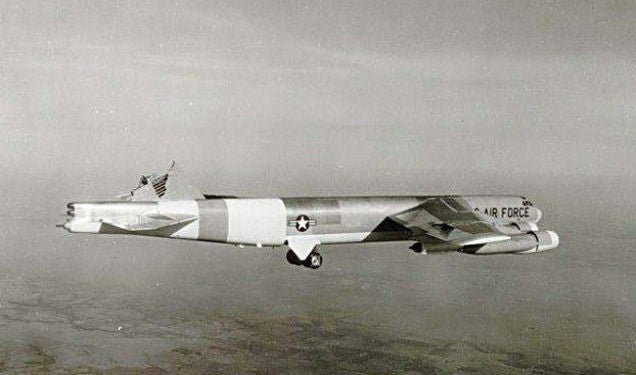
(US Air Force)
January 10, 1964 – A Boeing B-52H Stratofortess has its vertical stabilizer sheared off by turbulence but lands safely.
The
!!!error: Indecipherable SUB-paragraph formatting!!!
, on loan from the US Air Force and flying with a four-man civilian crew, was on a test mission to record sensor data for high speed, low altitude flight. Over New Mexico’s Sangre de Christo mountains, the crew encountered severe turbulence at 14,000 feet, and though it lasted only nine seconds, it was so severe that the vertical stabilizer was torn off the Stratofortress. In spite of the loss of yaw control from the missing stabilizer, and a center of gravity that had shifted due to the loss of the approximately 2000-pound fin, the crew managed to control the aircraft and call for assistance from chase planes and Boeing engineers on the ground. After flying for five hours, they diverted to Blytheville, Arkansas for more favorable weather conditions and landed the bomber without incident. The Air Force produced a safety film about the incident titled
!!!error: Indecipherable SUB-paragraph formatting!!!
.
!!! UNKNOWN CONTENT TYPE !!!
Connecting Flights
!!! UNKNOWN CONTENT TYPE !!!
!!! UNKNOWN CONTENT TYPE !!!
!!! UNKNOWN CONTENT TYPE !!!
!!! UNKNOWN CONTENT TYPE !!!
!!! UNKNOWN CONTENT TYPE !!!
If you enjoy these Aviation History posts, please let me know in the comments. You can find more posts about aviation history, aviators, and aviation oddities at !!!error: Indecipherable SUB-paragraph formatting!!! .
!!! UNKNOWN CONTENT TYPE !!!
 Chariotoflove
> ttyymmnn
Chariotoflove
> ttyymmnn
01/10/2020 at 12:49 |
|
The fact that the B-52 crew could land that plane is incredible. Also, I’ve driven through Blytheville many times on my road trips, but this is the first time I’ve ever read the name on anything other than a green interstate sign.
 Thomas Donohue
> ttyymmnn
Thomas Donohue
> ttyymmnn
01/10/2020 at 13:18 |
|
They have a Connie at JFK serving as a cocktail lounge as part of the TWA retro hotel. They left the cockpit intact.
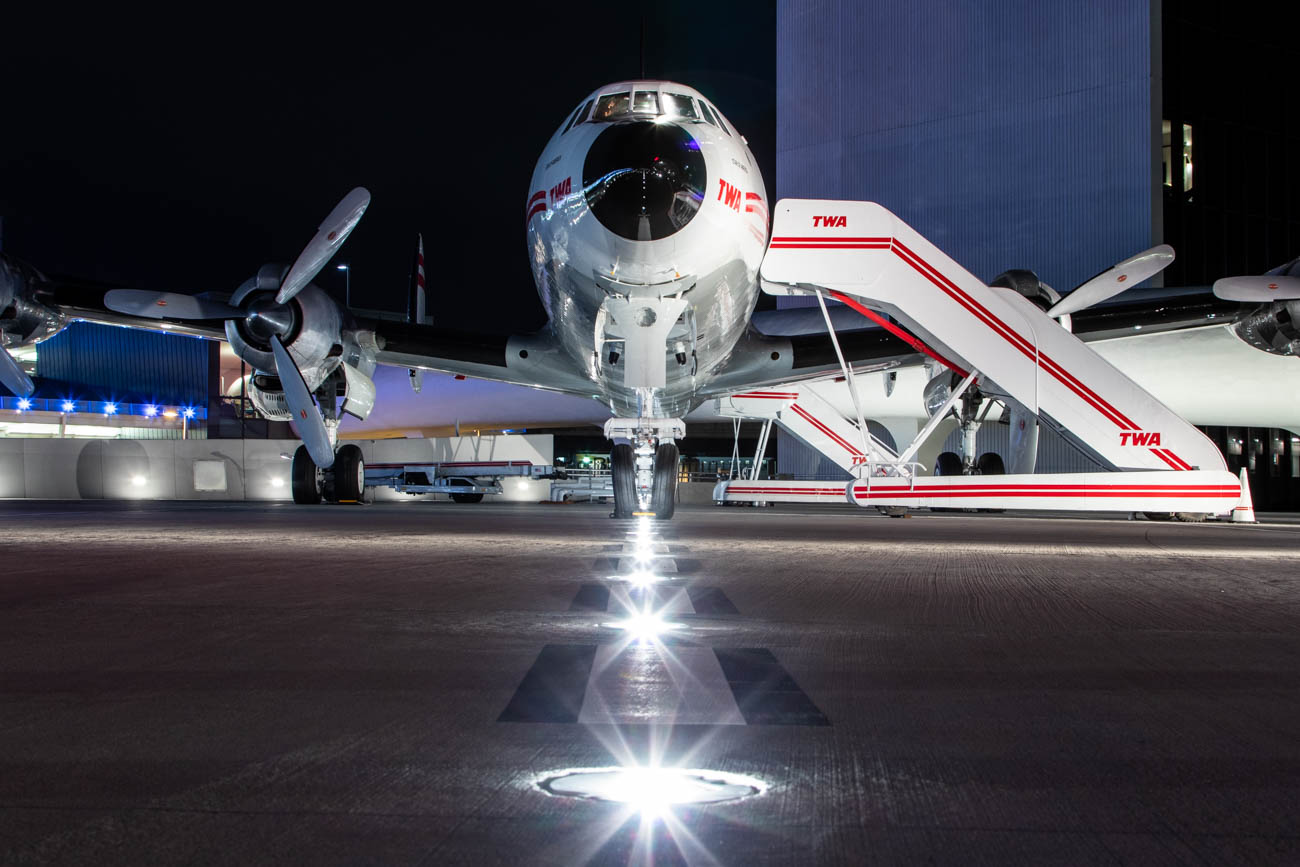
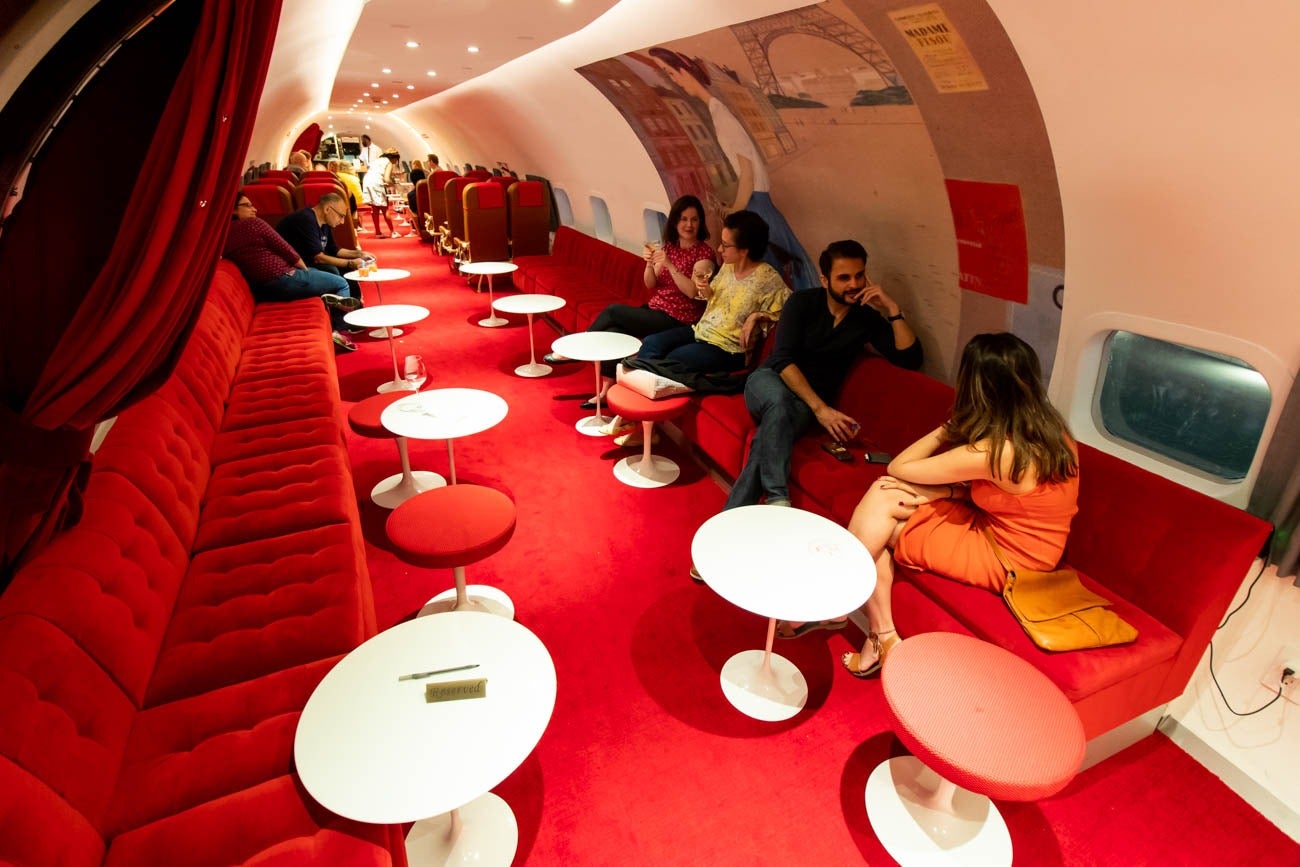
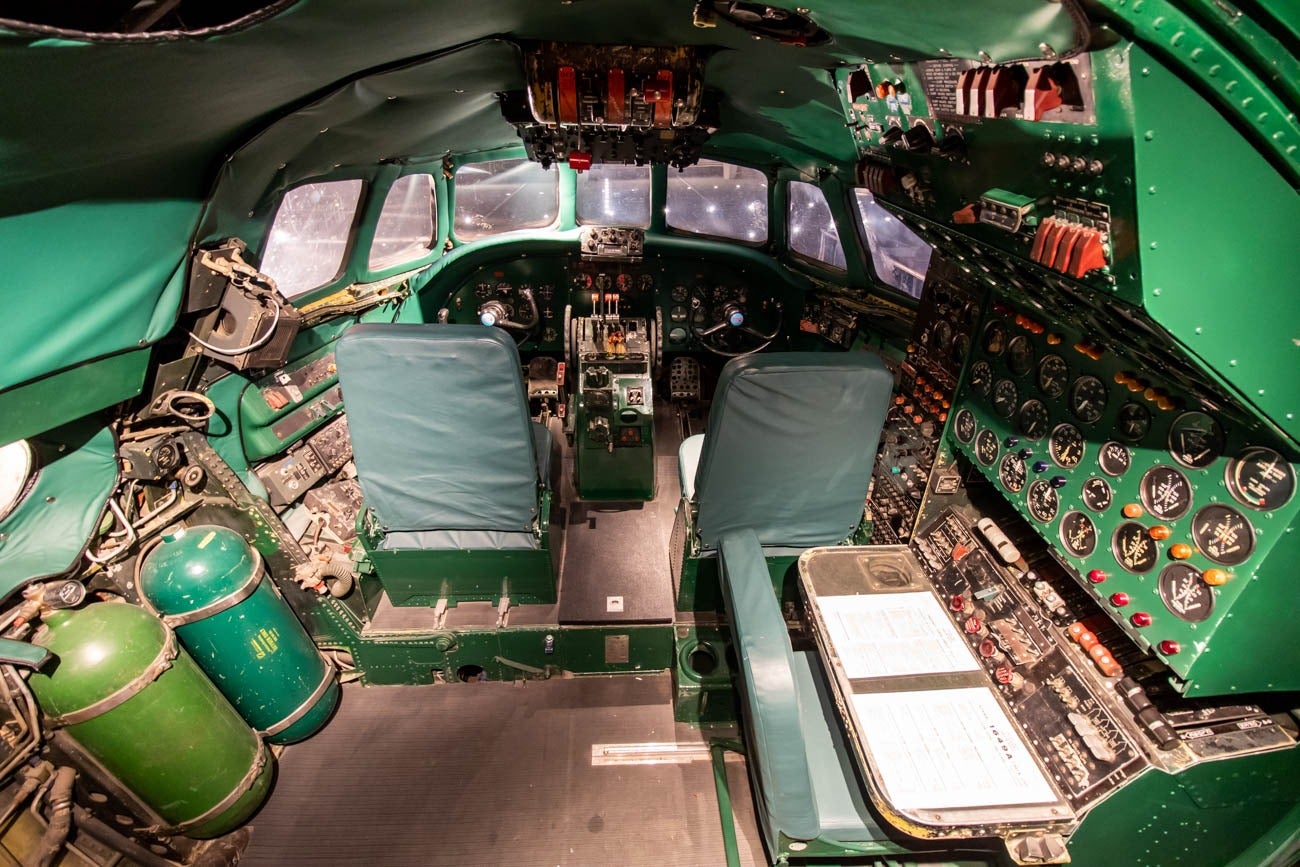
 John Norris (AngryDrifter)
> Chariotoflove
John Norris (AngryDrifter)
> Chariotoflove
01/10/2020 at 22:30 |
|
Ahh, rudders are overrated.
 John Norris (AngryDrifter)
> ttyymmnn
John Norris (AngryDrifter)
> ttyymmnn
01/10/2020 at 22:42 |
|
Thanks for pos ting. Always a pleasure to read and I always learn a few things.
P- 38 wing —> Connie wing . Amazing. Makes sense when you look at it though.
5 hour flight from New Mexico to Arkansas? That’s a lot of turns without a rudder.
 ttyymmnn
> Thomas Donohue
ttyymmnn
> Thomas Donohue
01/10/2020 at 22:55 |
|
I’d love to see it. I’ve never seen a Connie in person.
 ttyymmnn
> John Norris (AngryDrifter)
ttyymmnn
> John Norris (AngryDrifter)
01/10/2020 at 22:55 |
|
My pleasure. Thanks for reading!
 Chariotoflove
> John Norris (AngryDrifter)
Chariotoflove
> John Norris (AngryDrifter)
01/11/2020 at 13:29 |
|
Apparently this one was underrated for the situation.